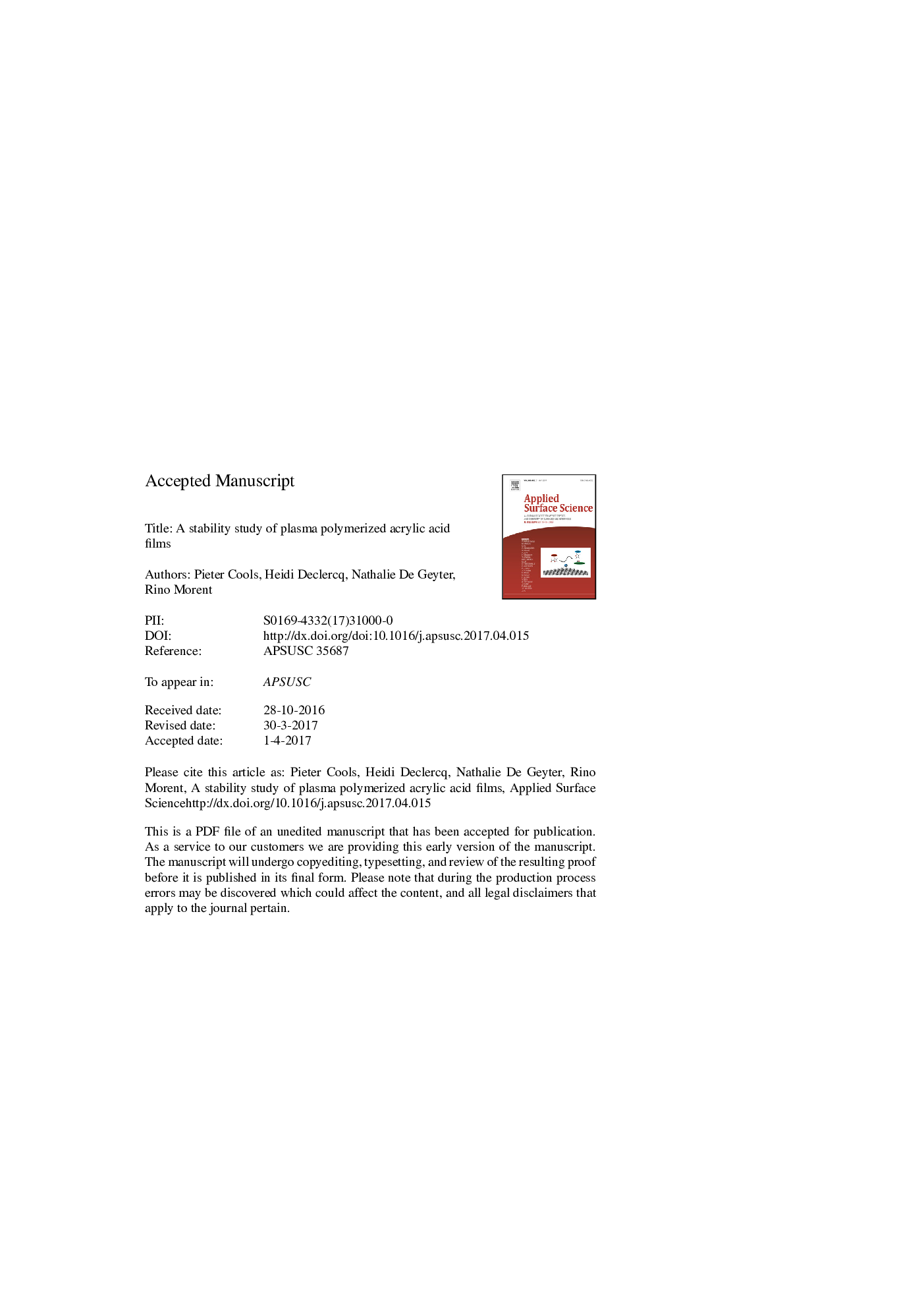| Article ID | Journal | Published Year | Pages | File Type |
|---|---|---|---|---|
| 7836373 | Applied Surface Science | 2018 | 21 Pages |
Abstract
A medium pressure parallel-plate DBD set-up was used for the deposition of carboxylic acid-rich films using acrylic acid as precursor. A variety of discharge powers (21-33Â W) and monomer flow rates (0.25-0.5Â g/h) were applied to develop a range of coatings from highly unstable to completely stable in aqueous solutions. FT-IR and XPS were used to identify which coatings were stable under dynamic incubation conditions and what influence plasma operating parameters had on functional group preservation. White light interferometry was also used to calculate deposition rates (66-126Â nm/min) and to determine the deposition regime (monomer deficient). Human foreskin fibroblasts were seeded onto the complete range of investigated samples and the effects of coating (in)stability on cell adhesion, viability and morphology were systematically studied. Results showed that the 27 W-0.25Â g/h treatment conditions resulted in the most stable coatings. Although a concentration of only 0.7% of carboxylic acid groups was found under these experimental conditions, the positive effects of a highly acid-rich surface were still maintained as cell-material interactions were significantly enhanced.
Related Topics
Physical Sciences and Engineering
Chemistry
Physical and Theoretical Chemistry
Authors
Pieter Cools, Heidi Declercq, Nathalie De Geyter, Rino Morent,
